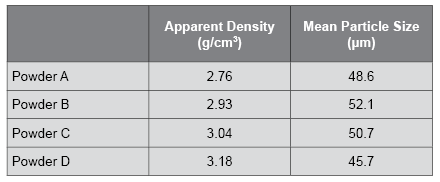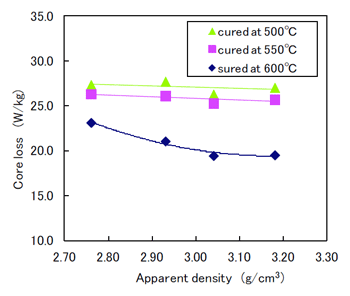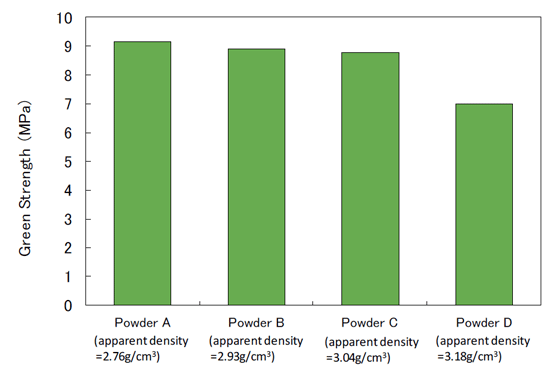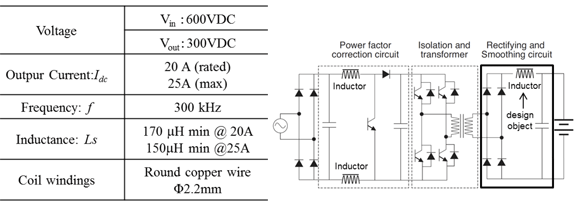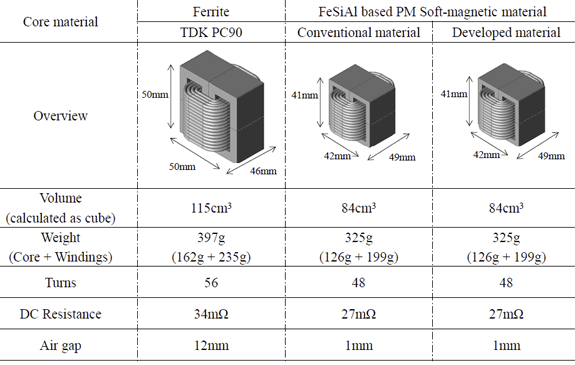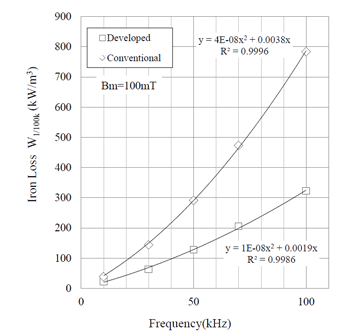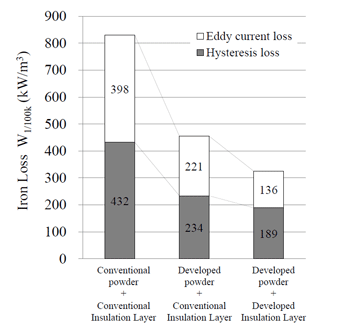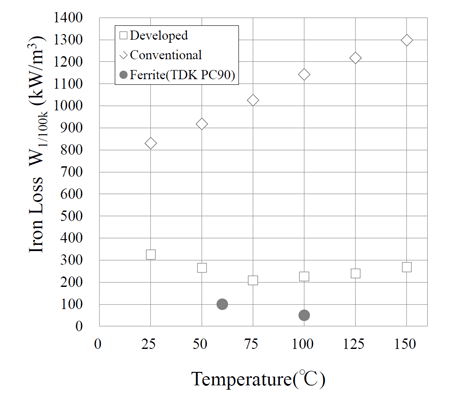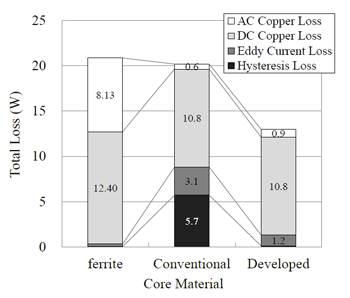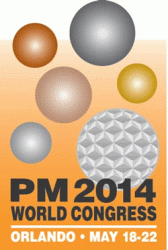PM2014 World Congress: Enhancement of properties of Soft Magnetic Composites through material and process developments – Part Two
Influence of apparent density on magnetic properties in dust cores, for high-frequency applications
Yuji Taniguchi, Hirofumi Hojo, Hironori Suzuki and Hiroyuki Mitani, Kobe Steel Ltd., Japan, reported on a study of the influence of apparent density on magnetic properties in dust cores for high frequency application.
This study was aimed at reducing hysteresis losses and was based on the concept that low hysteresis loss is associated with the reduction of obstacles to magnetic domain wall movement. The obstacles to domain wall movement are related to disorder of atom arrangement, specifically factors such as purity, crystal grain boundaries, particle grain boundaries and distortion.
In this study, particle shape was modified to influence particle grain boundaries; particle shape is related to apparent density.
The apparent density of a high purity iron powder was altered by milling followed by annealing (to eliminate milling distortion). The apparent densities and mean particle sizes of four different powder samples are shown in Table 1. The mean particle size of each powder sample was around 50µm.
These powders were insulated by double layer coating and were then compacted into rings with 7.45 g/cm3 density by a die wall lubrication method at 130°C. The ring specimens were cured at 500°C, 550°C and 600°C.
As shown in Fig. 1, the hysteresis loss is almost independent of apparent density for the lower curing temperatures of 500°C and 550°C. At these cure temperatures, the main obstacle to magnetic domain wall movement is the residual distortion, with particle surface having hardly any influence. However, at a curing temperature of 600°C, the residual distortion is sufficiently eliminated that a reduction in hysteresis loss with increasing apparent density is revealed.
However, minimum hysteresis loss is not the sole criterion for deciding optimum apparent density. Through the effects of the milling treatments, smoother powder surfaces are associated with higher apparent densities and this factor leads to a reduction of linkages between compacted particles and, hence, a reduction of green strength. Fig. 2 compares the green strengths of the compacts from the various powder samples.
It was concluded that powder D may have insufficient green strength to avoid cracking or chipping after compaction and, therefore, powder C, with an apparent density around 3.05 g/cm3, was deemed to offer the optimum combination of low core loss and high strength.
Development of FeSiAl-Based Low-Iron-Loss Soft Magnetic Powder Cores
A presentation by Tomoyuki Ishimine, Asako Watanabe, Tomoyuki Ueno and Terukazu Tokuoka, Sumitomo Electric Industries, Japan, described the development of FeSiAl-based low iron loss soft magnetic powder cores.
This study was aimed at developing high performance inductors, required for small and powerful power-supply devices with better conversion efficiency for applications in clean power and electric vehicles. The possibility of developing inductors of smaller size and with lower iron losses, using PM soft magnetic composite cores, was examined.
Especially for automotive applications, inductors are required that operate at temperatures above 100°C. Previous work by this group had identified the benefits of adding Si and Al to the base iron powder composition in reducing iron loss in this temperature range. Based on this prior work, the alloy compositions in this study were selected to minimise iron loss at 100°C.
Two different FeSiAl materials were included in the study:-
- A “conventional” material – a commercially available Fe-9.5Si-5.5Al powder, prepared by a milling method and sieved to -106µm.
- The “developed” material – an Fe-8.5Si-6.8Al powder, prepared by inert gas atomisation and, again, sieved to -106µm.
Each of these powders was coated with an insulation film and compacted into rings at 980 MPa, with 1 wt% PVA resin added as a compaction binder. The compacts were then heat-treated at 700°C.
In order to investigate the performance of the FeSiAl materials, inductors were designed for an in-vehicle battery charger using the conventional material, the developed material and ferrite. The specifications for designing the inductors are shown in Table 2. The results of designing the inductors the developed material, the conventional material and a ferrite material are shown in Table 3.
Fig. 3 shows the frequency dependency of iron loss, measured at 25°C, for the two FeSiAl soft magnetic composite materials. The developed material shows less than half the iron loss of the conventional material at 100 kHz.
Fig. 4 compared the eddy current loss and hysteresis loss of the two materials. Eddy current loss of the developed material and developed insulation layer decreased to around a quarter of that of the conventional material.
Fig. 5 compares the temperature dependency of iron loss for the materials in the study. For temperatures of 100°C and above, the developed FeSiAl material shows only around one fifth of the iron loss of the conventional material and this level is low enough to compare with ferrite.
Both of the FeSiAl materials delivered higher flux density than ferrite and this attribute can be used to downsize inductor design.
Fig.6 shows a comparison of loss generation during inductor operation for the three materials in the study.
Loss is composed of iron loss (the sum of hysteresis loss and eddy current loss) and copper loss (the sum of DC copper loss and AC copper loss). DC copper loss is heat generated by DC current, and AC copper loss is an eddy current loss in windings that is generated by leakage magnetic flux passing through the windings.
The iron loss property of ferrite material is so superior that the loss generated in the ferrite inductor is largely composed of copper loss and AC copper loss is generated as much as DC copper loss.
For ferrite cores, a magnetic gap is necessary for the modification of DC bias characteristics and this gap generates leakage magnetic flux and increases AC copper loss.
On the other hand, for inductors with PM soft magnetic cores, the magnetic gap is smaller than that of ferrite and AC copper loss is barely generated. However, the conventional material shows much larger iron loss than that of ferrite and, therefore, the total loss generated in the conventional material inductor is similar to that of the ferrite inductor.
Further more, the iron loss generated in the developed material inductors decreases to only one-sixth of the conventional material inductors and, therefore, the resulting total loss is smaller than the conventional material and the ferrite.
Inductors with ferrite cores have a problem in downsizing and suppression of AC copper loss. The trend in in-vehicle power units is to operate at larger currents and higher frequency conditions. On the basis of this trend, PM soft magnetic material with low iron loss (such as the “developed” material in this study) will play an important role in developing these next generation power control units.
References
[1] Yuji Taniguchi et al. (Kobe Steel Ltd., Japan), Influence of apparent density on magnetic properties in dust cores, for high-frequency applications, as presented at PM2014 World Congress, MPIF, USA
[2] Tomoyuki Ishimine et al. (Sumitomo Electric Industries, Japan), Development of FeSiAl-Based Low-Iron-Loss Soft Magnetic Powder Cores, as presented at PM2014 World Congress, MPIF, USA
Author
Dr David Whittaker is a consultant to the Powder Metallurgy and associated industries. Contact +44 1902 338498 email: [email protected]
PM2014 World Congress
The 2014 World Congress on Powder Metallurgy and Particulate Materials was organised by the Metal Powder Industries Federation. For more information please visit the MPIF website: www.mpif.org
<< Part one of this report
Download FREE PM Review magazine | News | Articles | Subscribe to e-newsletter



